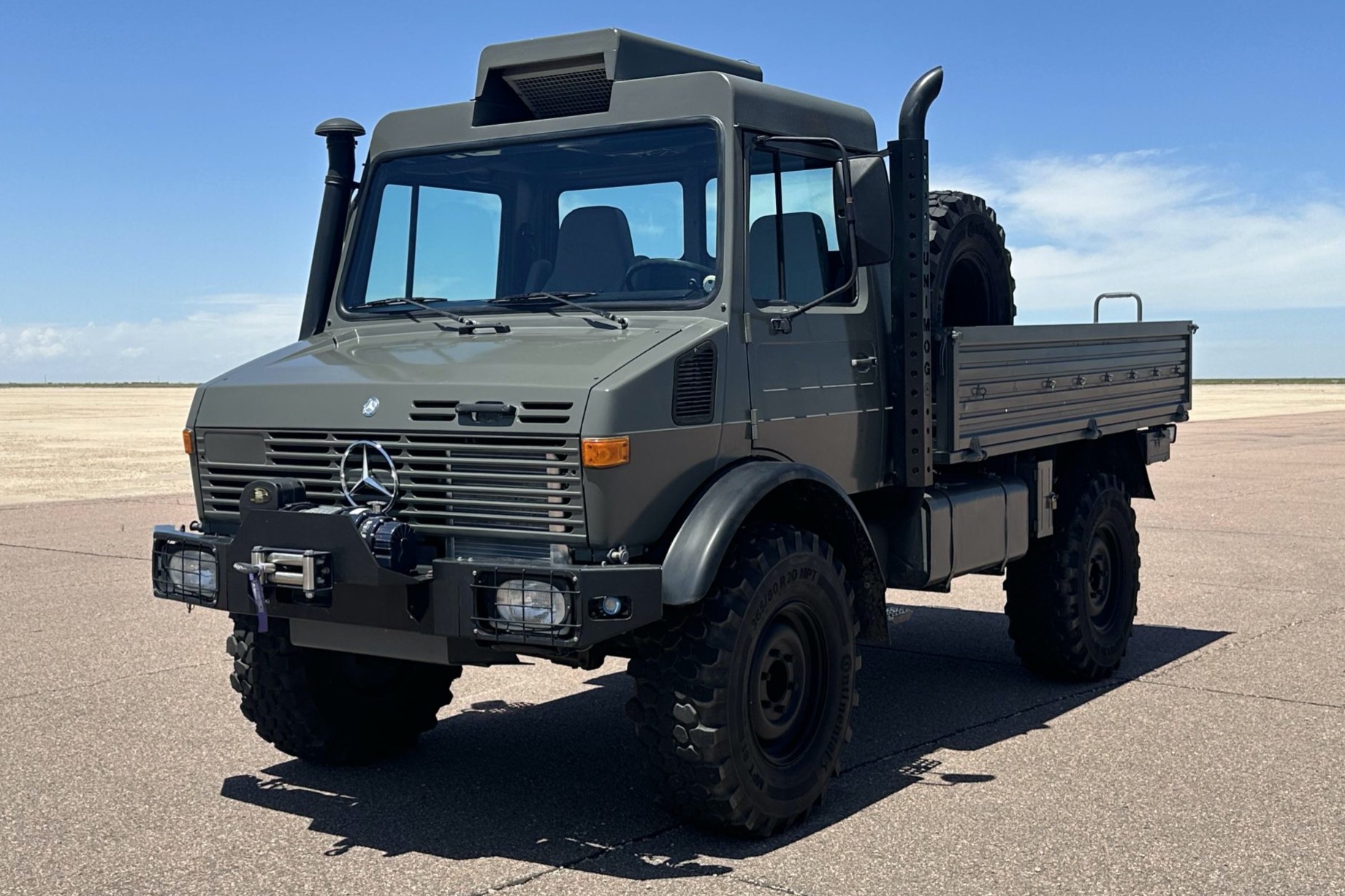Let’s get real, vehicle specs are written by engineers in labs, but real life plays out in dusty job sites, bumpy backroads, and overloaded driveways.
Whether you’re hauling tools, towing trailers, or stacking gear past the roofline, some vehicles can just take the punishment. Now, this isn’t an endorsement to run overweight, it’s unsafe and illegal, but for those times life doesn’t give you a choice, here are 10 vehicles with a proven reputation for handling more than they should.
Toyota Land Cruiser (80 and 100 Series)
There’s a reason why Land Cruisers are found in war zones, deserts, and mountain trails across the globe. The 80 and 100 Series, in particular, are overbuilt with stout frames, solid axles (in the 80), and drivetrains that can take years of abuse. Americans see them as luxury SUVs, but in other parts of the world, they’re tools of survival.
People load them up with everything, water tanks, rooftop tents, full-sized spares, tools, and fuel and they just keep crawling. They weren’t just designed to drive off-road; they were built to endure life where roads don’t exist.
The Toyota Land Cruiser has long been associated with off-roading and adventure, and rightfully so. Originally introduced as a no-frills utility vehicle, the Land Cruiser quickly gained a reputation for its rugged build and reliable components, which contributed to its formidable performance across unforgiving terrains.
Thanks to its unwavering dependability and go-anywhere ability, the Land Cruiser attracted a devoted following that spans generations and models.
The 80 Series Land Cruiser, also known as the FJ80, was launched in 1989 and remained in production until 1998. During that nearly decade-long run, it played a significant role in reigniting interest among off-roaders, overlanders, and adventure seekers in a 4×4 that offered both capability and comfort.
Over the years, the 80 Series has become increasingly desirable, celebrated for its unique combination of strength, reliability, and ride quality. Even today, well-maintained examples are in high demand, with pristine models fetching well into six-figure territory.
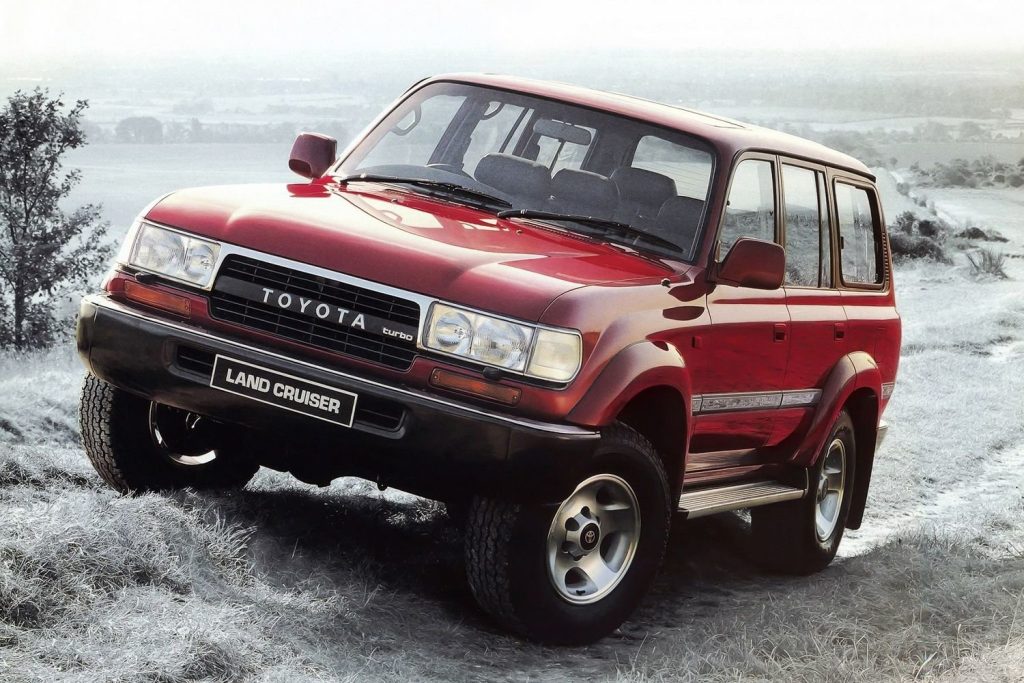
Let’s begin with the heart of the vehicle, the engines. Admittedly, the gasoline-powered variants found in U.S.-spec models left something to be desired in terms of power output and fuel efficiency.
They were not especially fast and were known to be thirsty at the pump, yet they were nearly indestructible. The diesel engines, on the other hand, offered robust low-end torque and ample pulling power, whether on-road or off-road.
It marked the first time a Land Cruiser came standard with coil-spring solid axles at both the front and rear, an upgrade from the leaf springs of previous generations. This not only enhanced ride comfort but also significantly improved wheel articulation, making the vehicle much more competent in rough terrain.
Select models were also equipped with front and rear differential locks, in addition to the standard center-locking differential. This trifecta of locking differentials gave the 80 Series exceptional crawling ability, surpassing most other utility vehicles of its era.
The solid axle setup also contributed to the Land Cruiser’s legendary toughness and ease of repair. If mechanical issues arose in remote areas, the 80 could often be fixed with nothing more than basic tools.
That said, breakdowns were rare, thanks to Toyota’s exceptional engineering, top-tier materials, and a reputation for overbuilding. Moreover, the 80 Series was incredibly mod-friendly.
With simple upgrades like larger tires and suspension lifts, owners could transform it into an even more capable off-road rig. Its adaptability made it a favorite in the off-road community and helped cement its legacy as a vehicle that could be tailored to meet just about any challenge.
Also Read: 5 Trucks That Never Blow Their Rear Diffs and 5 That Do Regularly
Ford F-350 Super Duty (Diesel)
The Ford F-350 Super Duty is America’s workhorse on steroids. When you spec one with a Power Stroke diesel, especially the early 7.3L, you get a truck that’s known for going half a million miles with little complaint.
The suspension, axles, and brakes are made to haul massive trailers and loads of gear, and in practice, many drivers push these limits regularly. From farm work in the Midwest to oilfield hauling in Texas, F-350s often roll down the highway squatting under heavy loads but never miss a beat.
The 2026 Ford F-350 stands as the middle-tier option within Ford’s F-Series Super Duty lineup. It surpasses the F-250 in both towing and payload capabilities but doesn’t quite reach the extremes of the F-450.
Buyers can choose between single and dual rear-wheel setups, and it’s also offered as a chassis cab model, allowing for specialized upfitting depending on the job. Despite its size and strength, the F-350 incorporates a number of smart features designed to make heavy-duty work more manageable.
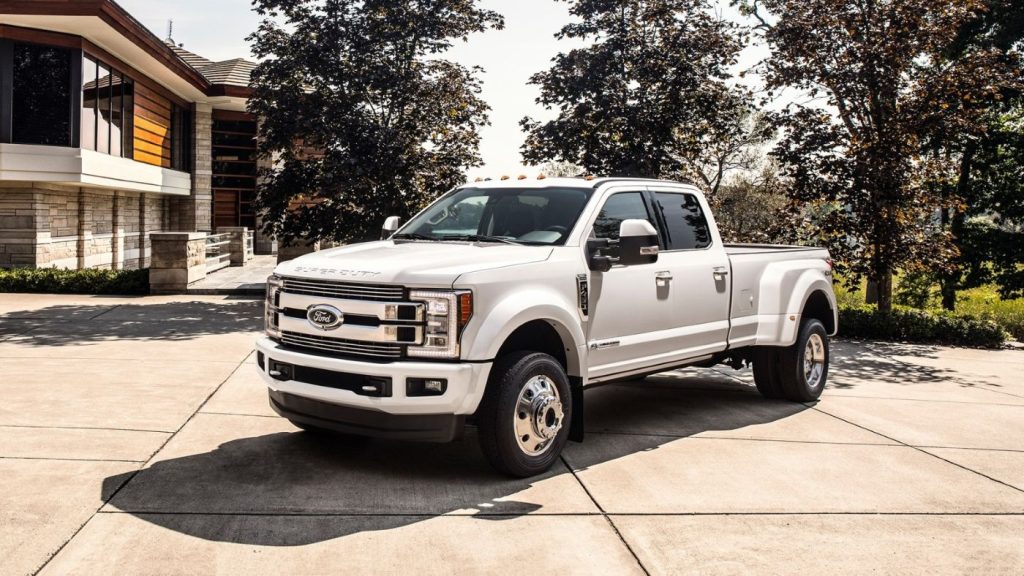
One standout is Pro Trailer Hitch Assist, which “automatically backs the truck up to a trailer and positions the hitch ball under the receiver at the push of a button.” Another noteworthy innovation is Ford’s Onboard Scales system. It employs sensors that monitor suspension squat to estimate how much weight is being placed in the bed.
Although the F-350 can be outfitted with premium touches, especially in higher trims like King Ranch and Platinum, its core identity is rooted in utility.
These trucks are designed primarily for demanding tasks. When properly configured, the F-350 is capable of towing as much as 28,000 pounds using a conventional bumper-mounted hitch, or an astonishing 38,000 pounds when equipped with a gooseneck trailer.
“That’s enough to pull the heaviest and biggest of loads, whether it be a recreational camper trailer or a trailer loaded with jobsite construction equipment.” Whether on the ranch, at a construction site, or hauling cross-country, the F-350 is built to deliver where it matters most, on the job.
Mercedes-Benz Unimog
If you’re unfamiliar with the Unimog, think of it as a military truck that somehow wandered onto civilian roads. Built with portal axles, a flexible chassis, and insane off-road articulation, it was made to conquer terrain, not just carry loads. That said, it can do both.
These trucks are favored in wildland firefighting, expedition builds, and global overlanding precisely because they handle overloading without fuss. They’re slow, sure, but in terms of sheer capability, the Unimog is in a class of its own.
You’ve probably heard of the Mercedes-Benz Unimog. But unless you’re a true enthusiast—a dedicated Moggite—you likely don’t know everything about it.
In fact, even if you are a Moggite, chances are you still don’t know everything everything, because the Unimog lineup is vast, complex, and packed with details that take some serious digging to fully grasp.
In most capable 4×4 vehicles, this sort of extreme off-roading scenario would have long since spelled disaster. “In a good 4×4, I would by now have flooded the engine, grounded the chassis, burnt through several clutches and remodelled the bodywork.
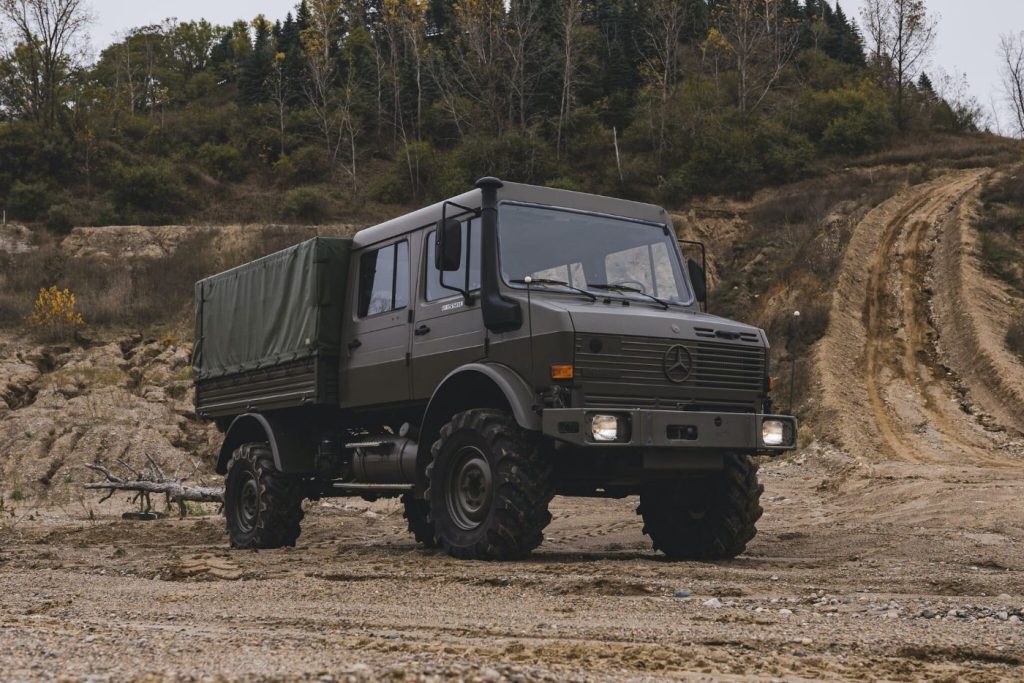
I would, in short, be walking home, possibly with a limp and certainly with wet trainers.” But not today, that’s because I’m behind the wheel of a Mercedes Unimog.
Now celebrating its 75th anniversary, the Unimog falls under the umbrella of Daimler Truck, which also includes other commercial giants like Freightliner and, of course, Mercedes-Benz itself.
At a glance, the Unimog line seems to consist of just two main models: the UGE implement carrier and the UHE extreme off-roader. The model I’m driving here is the UHE. However, just like the diverse Mercedes-Benz car lineup, it’s not nearly as simple as it appears.
Also Read: 5 Popular Cars That Everyone Regrets Buying and 5 They’d Buy Again
Chevy Silverado 2500 HD / 3500 HD (Duramax)
The Chevy Silverado HD trucks especially when equipped with a Duramax diesel and an Allison transmission, are built for serious business. Landscapers, RV haulers, and contractors all rely on them to move heavy payloads well past factory ratings.
The chassis is rock-solid, the diesel engine churns out massive torque, and the transmission is among the most respected in the industry. Whether you’re hauling stone or towing a fifth-wheel trailer up a mountain pass, these trucks won’t tap out early.
The Silverado HD lineup offers serious muscle under the hood, beginning with the revised 6.6-liter Duramax turbodiesel engine.
This powerhouse now delivers a class-leading 445 horsepower and an astounding 910 lb-ft of torque. It’s paired with an upgraded Allison six-speed automatic transmission, and “together they’ll blast past every diesel-powered rival.”
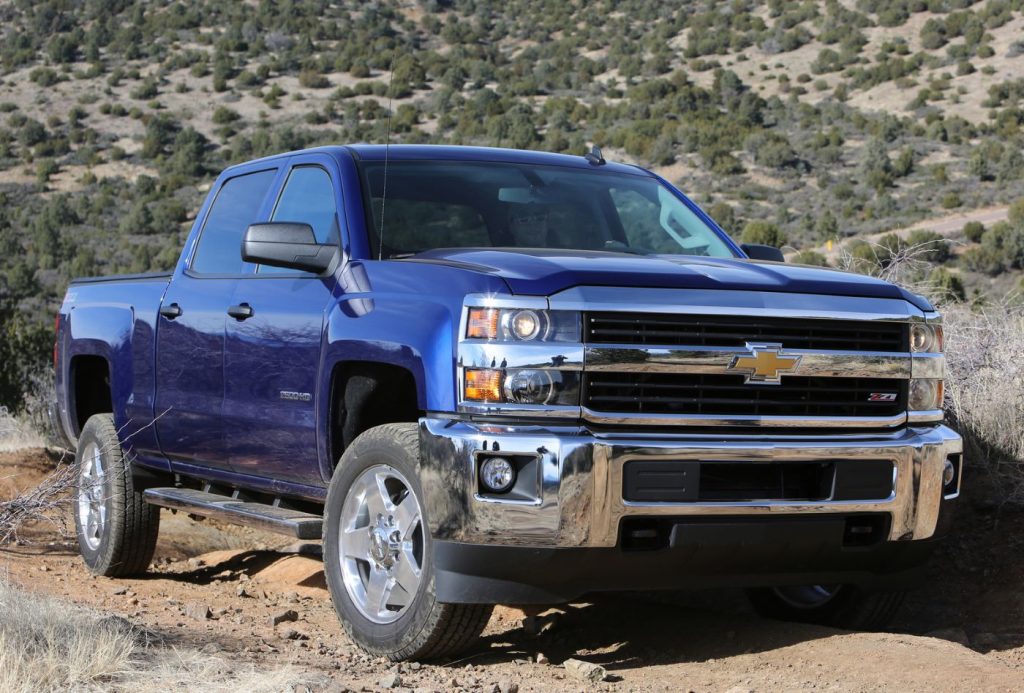
For those who don’t require the diesel’s jaw-dropping torque or want to avoid the added cost, the standard option is a 6.0-liter V-8 engine producing 360 horsepower and 380 lb-ft of torque, also mated to a six-speed automatic. This base setup is still highly capable and more than sufficient for typical heavy-duty tasks.
When it comes to performance, the Silverado HD doesn’t just compete, it dominates. “The Silverado HD is the quickest, most agile heavy-duty pickup this side of anywhere.”
Jeep Gladiator Rubicon
The Jeep Gladiator isn’t the obvious choice here, but it’s quietly proven itself among overlanders and hardcore weekend warriors. Its frame, adapted from the RAM 1500, is much more robust than the Wrangler’s, and the Rubicon trim adds locking differentials and beefy axles.
People load these up with steel bumpers, winches, water tanks, recovery gear, and rooftop tents, regularly pushing the payload limit. And yet, these trucks continue to handle punishing trails and heavy gear without complaining. It’s not perfect, but it’s tougher than it looks.
The arrival of the 2020 Jeep Gladiator introduced an exciting new contender into the midsize truck segment. At its core, the Gladiator is essentially a four-door Wrangler Unlimited that’s been modified with a longer wheelbase and replaced its enclosed cargo area with a functional 5-foot pickup bed.
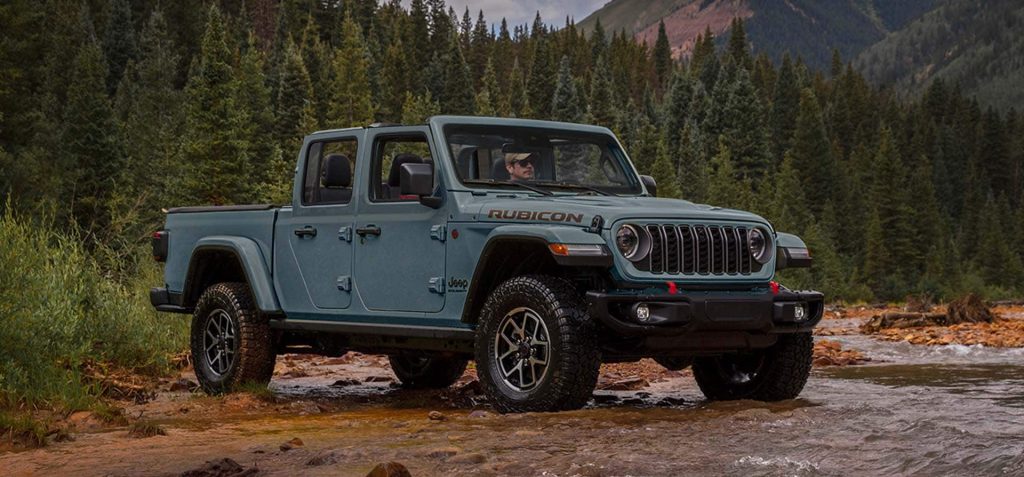
This infusion of Wrangler DNA equips the Gladiator with “off-road performance that no other truck can match.” The Gladiator isn’t just about rugged looks, it brings serious capability to the table when it comes to towing and hauling. Properly equipped, it can tow up to 7,650 pounds, which is a best-in-class figure for midsize trucks.
The bed may come in only one configuration, a 5-foot length but it’s designed for utility. It features helpful design touches, including a unique tailgate setting that allows for transporting 4-by-8-foot sheets of plywood without a headache.
For those seeking even more off-road prowess, there’s a Rubicon trim available, echoing the Wrangler’s hardcore variant. “Features such as lockable front and rear differentials, standard 33-inch all-terrain tires and a disconnectable front stabilizer bar give the Gladiator Rubicon the ability to traverse difficult terrain with ease.”
Toyota Hilux (International, but relevant)
The Toyota Hilux isn’t sold in the U.S. anymore, but its reputation echoes loudly. Known as the indestructible pickup, the Hilux is what you see hauling overloaded stacks of cargo in Africa, South America, and the Middle East.
It’s essentially the Tacoma’s more rugged cousin, simpler, tougher, and favored by NGOs and rebel groups alike. Owners have been known to carry more weight than the truck itself and still keep rolling across sand, mud, and rock. If Toyota brought it back to the States, we’d be lining up to buy.
Although the Single Cab and Extra Cab versions of the eighth-generation Hilux were developed with specific roles in mind, it was the Double Cab variant that truly captured attention and consumer dollars. This configuration offered a more versatile appeal, elevating the Hilux beyond just a work truck and into a broader lifestyle vehicle.
The 2015 Double Cab took center stage in the lineup, debuting with a bold, SUV-like front-end design. “Its wide headlights with wedged shapes and swept-back lines looked more dynamic and slightly aggressive.” Toyota also added daytime running lights featuring 12 LEDs, giving the truck a signature appearance.
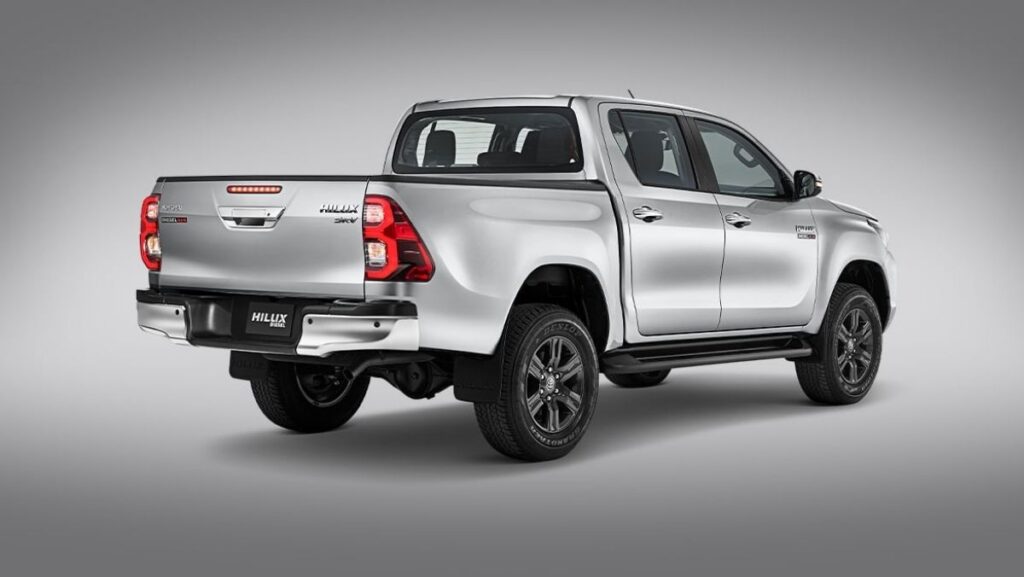
The grille was fitted with two horizontal slats and the automaker’s chrome emblem, while the lower bumper featured a trapezoidal air intake paired with scooped housings for optional fog lights.
From a side profile, the 2015 Hilux Double Cab offered a more cohesive, well-proportioned look than its stablemates. The flared wheel arches and full-sized four-door cabin gave it an SUV-like silhouette, only the rear cargo bed reminded buyers that it was still a working pickup.
Enhancements such as body-colored side mirrors with integrated turn signals and available side steps added to its family adventure-ready appeal. Around back, the rear tailgate featured an integrated third brake light at the top and was framed by tall, sharply angled taillights that helped modernize its rear styling.
Inside, Toyota made a deliberate effort to bridge the gap between utility and passenger comfort. “Toyota tried to create a car-like interior for the 2015 Toyota Hilux Double Cab.” The dashboard featured soft, curved lines and an available infotainment system with a center-mounted touchscreen.
RAM 2500/3500 (Cummins Diesel)
RAM’s heavy-duty lineup, when paired with the legendary Cummins diesel engine, is a brute. The 6.7L Cummins puts out serious torque, and the 3500 model with dual rear wheels is made for extreme towing and hauling.
In the real world, oilfield crews, haulers, and off-grid homesteaders pile on the weight, and the RAM handles it like it’s just another Tuesday. It’s not uncommon to see a 3500 loaded well beyond spec doing cross-country runs without blinking.
Thanks to the pairing of the excellent turbodiesel engine with a more modern transmission, the truck now delivers improved drivability, greater efficiency, and enhanced overall capability.
An especially noteworthy change is Ram’s decision to offer the same engine options for both the 2500 and 3500 variants. Previously, the highest-output torque engine was reserved only for the 3500, but now it’s available across both models, an upgrade that drivers will certainly appreciate.
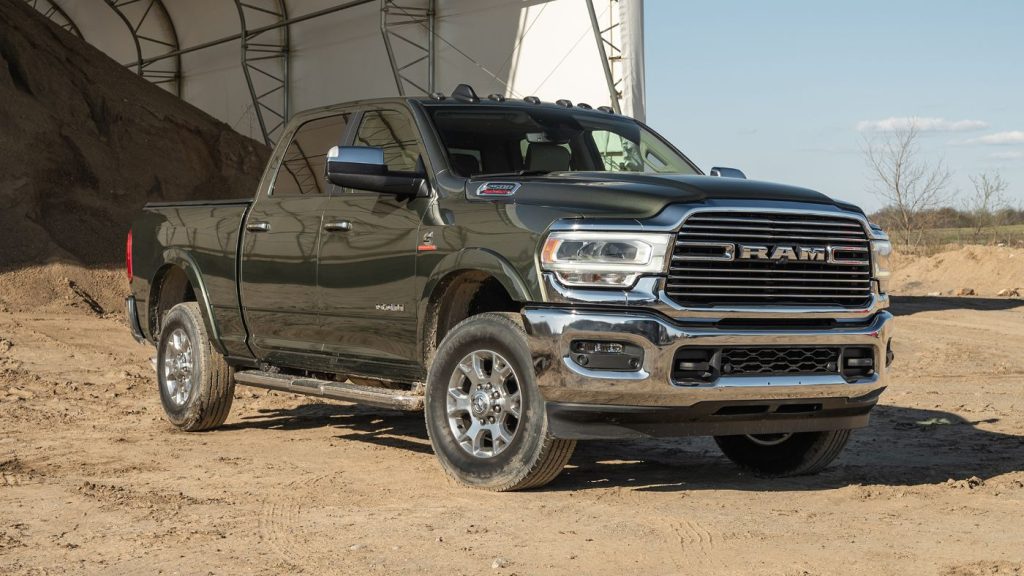
The cabin now features larger and more advanced digital displays that enhance usability and visual appeal. The Ram 2500 has always been tech-forward, but the 2025 updates further elevate the cabin with larger and more advanced digital displays.
With upgraded processing power and the introduction of an optional co-pilot screen for the front passenger, working on the go has never been easier. With these changes, the Ram 2500 remains firmly positioned at the top of its class in the heavy-duty truck category, solidifying its place in our rankings.
Isuzu NPR / NQR Series (Cab-over Box Trucks)
The Isuzu NPR and its siblings don’t get a lot of glory, but they are absolute tanks in the small commercial space. Think landscapers, delivery businesses, mobile mechanics.
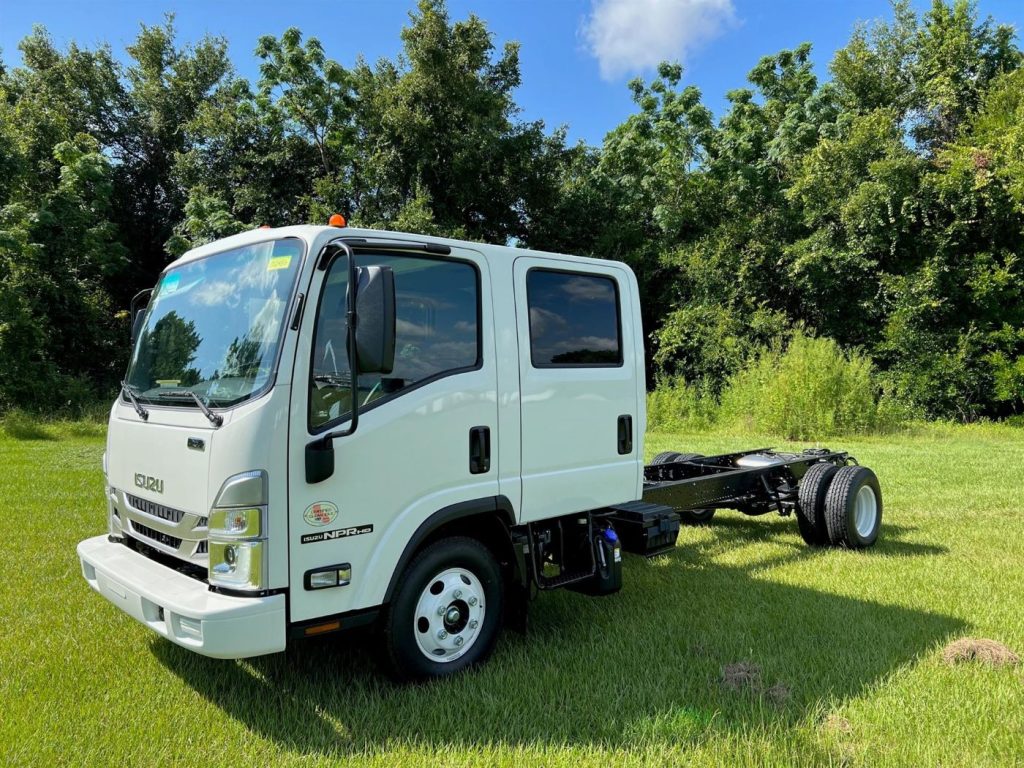
These cab-over trucks are routinely overloaded with tools, equipment, and materials, and yet they keep chugging along city streets and industrial parks like champs. Their diesel engines are designed for stop-and-go abuse, and they’re easy to repair and maintain. They’re not flashy, but they’re freakishly reliable.
Subaru Outback (2000s-early 2010s)
This one’s a curveball, but anyone who’s lived in the Pacific Northwest or Colorado knows what’s up. The Subaru Outback is the unofficial car of people who live out of their vehicles.
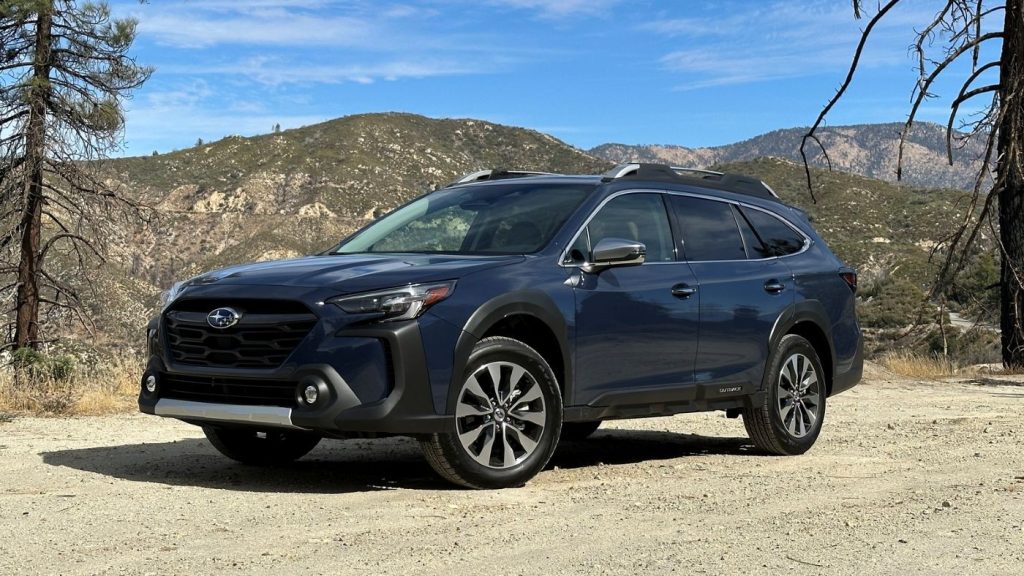
While not designed for heavy loads, these wagons routinely carry roof boxes, bikes, cargo trays, and enough camping gear to outfit a scout troop. And yet they still make it up snowy passes and muddy forest roads. Suspension wear? Sure. But driveline failure? Rare. These things punch above their weight, every single time.
Hummer H1
You either love it or hate it, but the Hummer H1 is the real deal when it comes to military-grade toughness. Designed for battlefield logistics, it boasts a 10,000+ pound curb weight and the kind of durability that most modern SUVs can only dream of.
With portal axles and a wide stance, it can carry enormous payloads without flinching. Civilian models might look ridiculous at Starbucks, but in off-road or expedition use, there are few platforms that can handle a heavy load like an H1.
It wasn’t the missing gun turret that stood out, though I noticed its absence immediately. Nor was it the surprisingly comfortable Isringhausen seats that caught my attention.
The real indicator that the legendary Humvee had been softened by the forces of political correctness was what greeted me the moment I climbed into the driver’s seat: the underside of the sun visor, plastered with warnings such as “Wear Seat Belts” and “Don’t Drink and Drive.”
Marvelous. Somewhere inside this vehicle, I’m sure there’s also a sign reminding passengers to “Wash Hands After Going to the Bathroom.”
Then there’s the matter of the engine. This beast tips the scales at 6,766 pounds. So, what did AM General decide was appropriate to power this three-and-a-quarter-ton heavyweight?
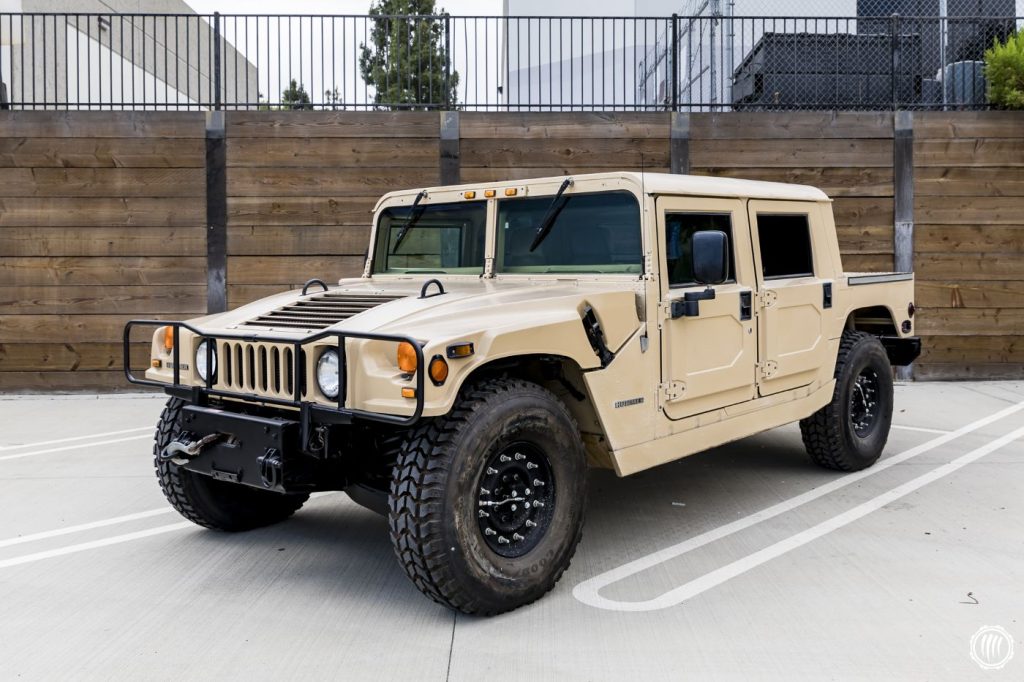
A 350-cubic-inch small-block Chevy V-8. While this engine is tuned for maximum torque, 300 pound-feet at 2,400 rpm and carries a certain politically correct appeal, it’s simply not up to the job.
It struggles, taking a glacial 18.1 seconds to go from zero to 60 mph, delivering about the same acceleration as a beached whale. Hitting 80 mph takes a painful 46.8 seconds, which also happens to be just 3 mph shy of the Hummer’s top speed.
If you have to ease off the gas on the infamously fast-moving Washington Beltway, where 55 mph is just asking to get rear-ended by drivers going 30 mph faster, don’t expect to rejoin your convoy quickly. By the time this machine finally regains its pace, you’ll be at least two exits behind.
Meanwhile, the overworked small-block V-8 roars in protest, sounding as if it’s been lubricated with gritty sand straight from Daytona Beach. “All the while, the straining small-block sounds as if it were lubed with sand imported from Daytona Beach.”
The brakes don’t inspire much more confidence. If you’re wearing steel-soled motorcycle boots, drag your feet, you’ll need all the help you can get. Decelerating from 70 mph to a dead stop requires 253 feet, the worst figure C/D has reported since its last Hummer test, in July 1992.”
Let me know if you want to maintain the humorous tone in future rewrites or prefer a more neutral narrative voice.
In a world where pushing limits is often part of the job, or the journey, it helps to know which vehicles can go the distance. Again, we’re not saying you should overload these machines.
But if life throws you a curveball and your truck ends up heavier than it should be, these are the rigs most likely to get you home. Some were built for war zones, others for American work sites, and a few just earned their keep through stubborn reliability. One thing’s for sure: these vehicles don’t quit.

